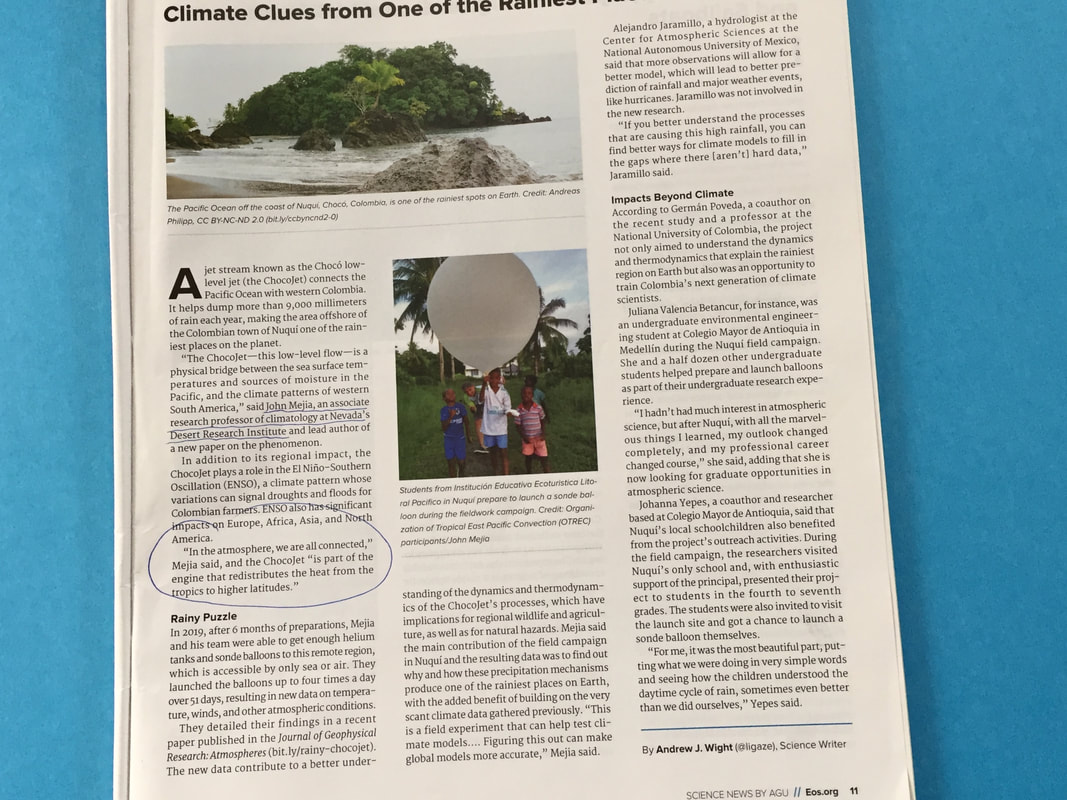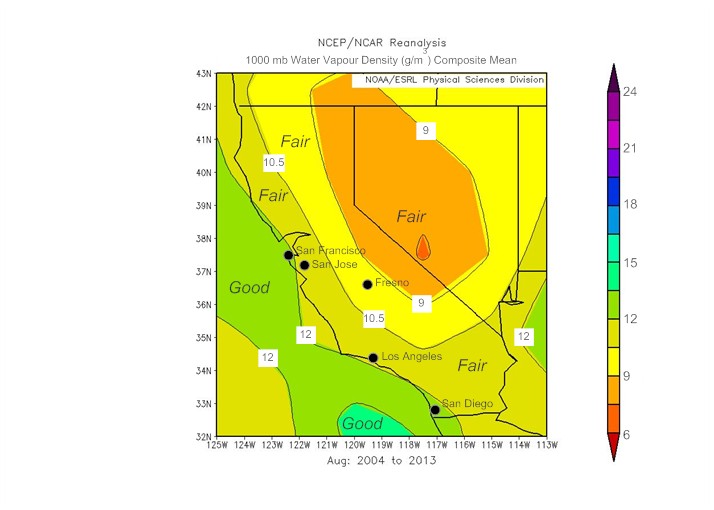|
More musings---see previous blog post. This time I was reading a recent issue of Eos (August 2021), published by the American Geophysical Union (AGU). One article (Climate Clues from One of the Rainiest Places on Earth, page 11, by A. J. Wight) contained a wonderful quote. "In the atmosphere, we are all connected," and the [low-level jet stream] "is part of the engine that redistributes the heat from the tropics to higher latitudes." So stated John Mejia, associate professor of climatology at Nevada's Desert Research Institute. The water-from-air industry's main resource is the water vapour in the atmosphere. Water vapour is transported great distances between regions on Earth by the global atmospheric circulation processes. We are all connected in seeking to utilize this water resource residing in our "atmospheric commons". Atmospheric water vapour is, of course, just one part of the water cycle, one of the many essential planetary cycles of natural materials.
0 Comments
In response to a reader's comments, the July 2018 reprinted second edition incorporates enhanced temperature versus relative humidity psychrometric tables in Chapter 4 with wider temperature ranges (0–55 °C; 32–132 °F) for finding water vapour density, humidity ratio, and dew-point. This makes the tables more useful for cities like Abu Dhabi, Doha, and Dubai.
This reprint also has a revised Appendix 6: Economics of Off-grid Solar PV for WFA. There are two detailed examples in the Appendix. The first example is for a 1.05 kW input power atmospheric water generator using 1-phase electric power. The second example is for a 2.1 kW input power atmospheric water generator using 3-phase electric power.The Appendix presents clear diagrams showing the main components of single-phase and three-phase off-grid solar PV systems. The Appendix concludes by revealing, for each example, the ratio comparing the price of an off-grid solar PV system to the price of the atmospheric water generator. The Water-from-Air Quick Guide may be purchased from Amazon. Air masses with relatively high water vapor densities (exceeding 12 grams of moisture per cubic meter of moist air) surround San Francisco / San Jose and Los Angeles / San Diego. 'Good' performance is expected from water-from-air systems (atmospheric water generators) operated in these regions. Over the balance of the state, the water-from-air resource is graded as 'fair'.
This map is from the new Atmoswater Research 45-page publication, Atlas of the Water-from-Air Resource for California. |
Roland Wahlgren
I have been researching and developing drinking-water-from-air technologies since 1984. As a physical geographer, I strive to contribute an accurate, scientific point-of-view to the field. Archives
May 2024
Categories
All
|




